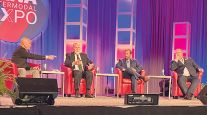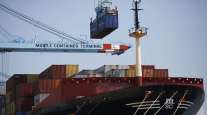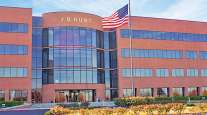Intermodal Outlook Positive for 2018
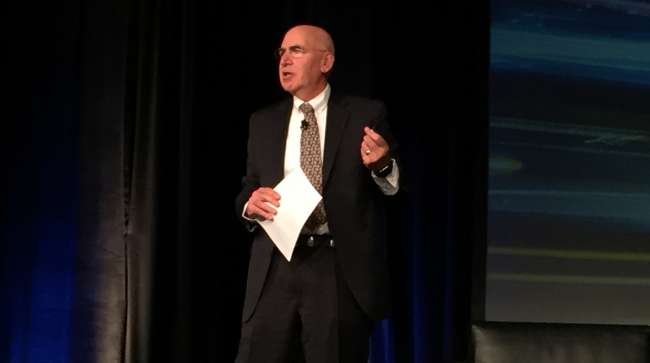
LONG BEACH, Calif. — Intermodal transportation has rebounded this year after receding in 2016, and analysts forecast that next year also will be strong for the industry.
In 2016, total intermodal traffic declined 2.1%. International intermodal business fell 3.3% and domestic slipped 0.7%.
However, this year, intermodal has grown 3.7% year-to-date with international up 4.9% and domestic 2.6% better than 2016, according to FTR. The research group predicts 4.7% growth for the full calendar year, led by a 5.2% increase in international business.
RELATED: Intermodal could gain from trickle down from ELD mandate
While FTR intermodal expert Larry Gross forecasts a slight deceleration to 4.2% in 2018, he still presented a favorable report at the 2017 Intermodal Association of North America conference.
“Primarily, the pullback will be on the international side because we’re not convinced this current burst of activity on the import side will be sustained,” he said. “On the other hand, we feel domestic [business] will continue to be very strong. The full ELD effect won’t be felt until 2018 because they’re not going to enforce it in any real way until April.”
In the short term, Gross believes the transition to electronic logging devices will cause a ripple effect for owner-operators next year. Long term, he thinks most commercial fleets will adjust, although rates will remain above pre-ELD levels because fleets will be unable to compensate fully for the productivity loss. Historically, when over-the-road prices climb, shippers tend to look to intermodal rail to remain within their transportation budgets.
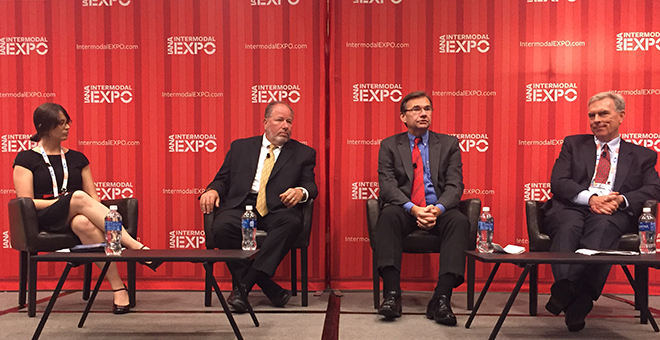
Panel moderator Erica Phillips (left), Strauss of the Federal Reserve Bank of Chicago, Kemmsies of Jones Lang La Salle, and Larkin of Stifel, Nicolaus and Co. (Ari Ashe/Transport Topics)
Next year, intermodal could gain market share on 500- to 1,000-mile hauls, executives at the show told Transport Topics. Some truckload executives publicly denounce the owner-operators who flagrantly violate the hours-of-service rules, doing the longhauls in one day. Privately, some also are exasperated at the brokers and shippers that turn a blind eye to the illegal practices in order to lower costs.
Lee Clair, managing partner at Transportation and Logistics Advisors, said that with strict ELD enforcement, invoice amounts could soar 100%, and intermodal would provide an option to mitigate the financial damage.
The favorable intermodal industry outlook assumes that the economic recovery will continue into a 10th year.
“Statistically, the longer the expansion period, the more likely you’ll see a recession in the next few quarters. But if you look at the economy structurally, I would not think that’s a good bet,” Jones Lang LaSalle economist Walter Kemmsies said. “Right now, I just don’t see in any industry, particularly in logistics, where we’ve got any big booms going on. In e-commerce, we’re seeing a number of inland ports emerge and a lot of investment in distribution centers, but it’s being offset by the loss of [brick-and-mortar] retail square footage.”
Since mid-2009, the gross domestic product has only grown at a 2.1% annualized rate, prompting economist William Strauss to jokingly refer to it as “the tortoise economy.”
In general, economists consider 3% as the threshold for a robust economy.
“These boom periods or bubble-like sectors that threaten the expansion are few and far between,” said Strauss, an economic adviser to the Federal Reserve Bank of Chicago. “The risk to the economy is not domestic. We have to look at something either with China and whether it has a challenge in its growth or some of the geopolitical risks [Iran, North Korea]. We have to keep our eyes beyond our borders for negative shocks to the U.S. economy.”
Stifel, Nicolaus & Co. transportation analyst John Larkin said the sluggish rate of growth is a blessing and a curse to the economy.
“You don’t really see a lot of really rapid investment, you don’t see a lot of job creation,” he said. “It’s all really subdued. But that lack of investment and job creation keeps capacity utilization low, keeps pressure off inflation. And it’s an overheated inflation that often triggers the next recession.”


